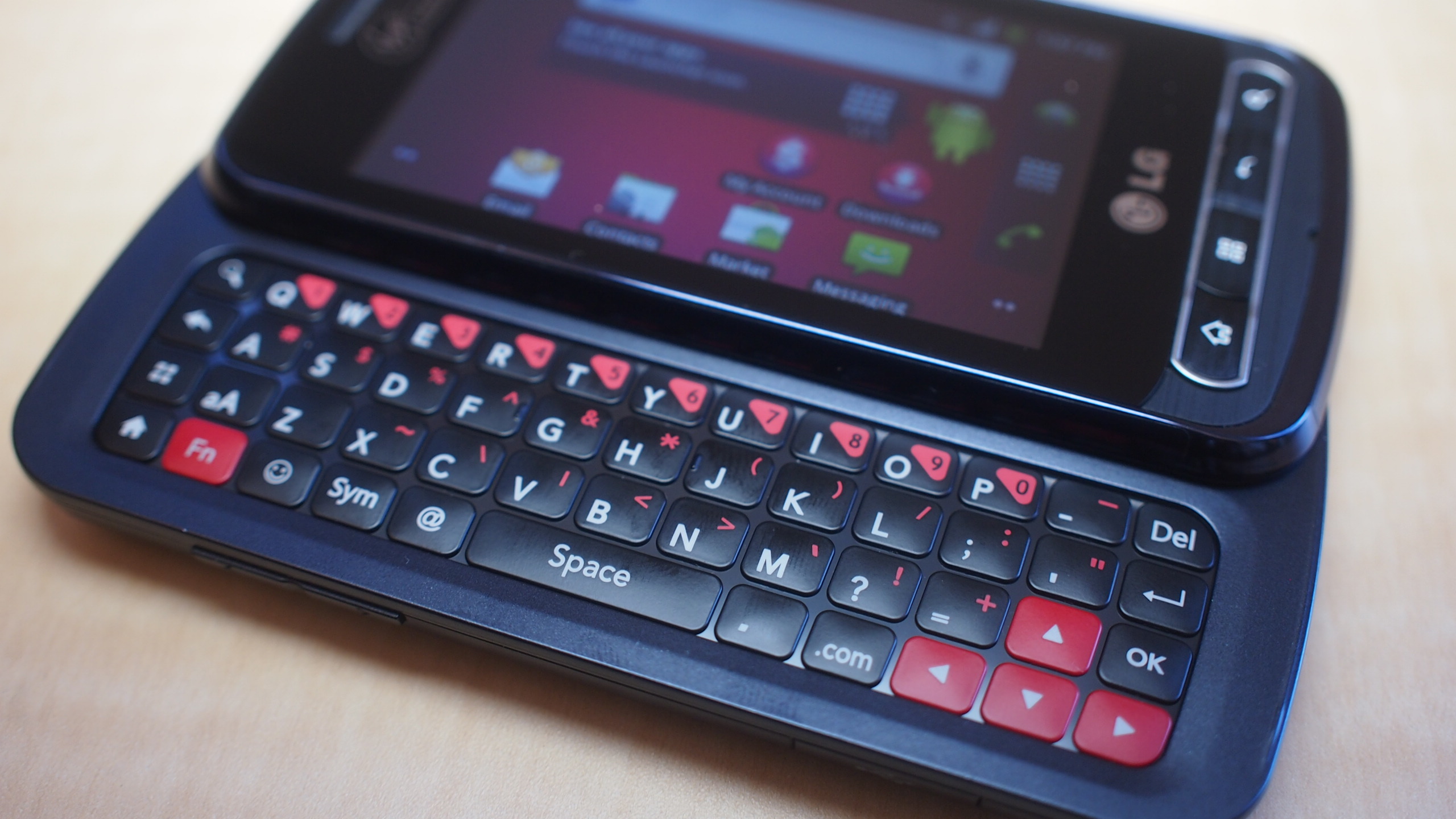Why you can trust TechRadar
The LG Optimus Slider, like many budget devices, packs a considerably low profile. Coming it at just 4.53" x 2.32" x 0.58," it's noticeably small when compared to most other handsets sporting Google's mobile OS today. Which results in something that fits right in the palm of your hands. Though the diminutive sized device is considerably hefty; it's 5.51 oz. and actually feels bulky, despite its modest dimensions.
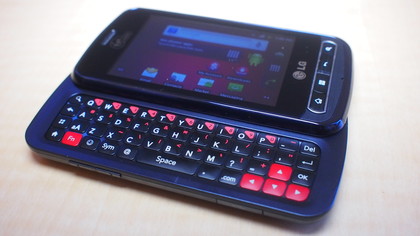
This is entirely due to the physical keyboard, the key-differentiating feature between the Slider and its predecessor, the aforementioned V. The sliding mechanism is basically solid; we've definitely handled better, but it's by no means flimsy feeling either. Unfortunately, the keyboard itself is at the bottom of a long list of problems that plagues the device.
The keys feel nice; they're plastic, yet sport a vaguely rubbery finish. The problem is, they're grouped too closely together, which forces one to type rather slowly and deliberately, less they want to have tons of typos when all is said and typed. If there was just a tiny bit of space separating the keys, or better yet, if the key themselves were ever so slightly wider, there would be no problems. But as is, it's still functional.
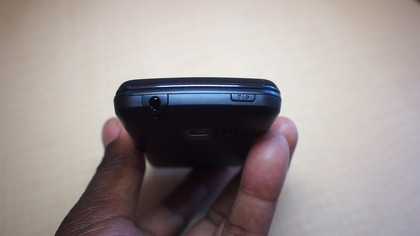
The top of the phone has the power/sleep button to the left, the headphone jack to the right. Like other Android devices with a compact profile, when a pair of headphones is inserted, a portion of the plug is visible. But unlike certain other phones, such as the Samsung Conquer 4G (Sprint), the fit is nice and tight. One of the primary focuses of the machine is it music capabilities, so it's especially appreciated.
To the left is the volume rocker and a cover for the USB port, for recharging and hooking it up to a PC, for media transfers. To the right is the dedicated shutter button that activates the camera app when you're inside the phone. The problem is, it's not entirely dependable, and is an issue that is consistent throughout the device.
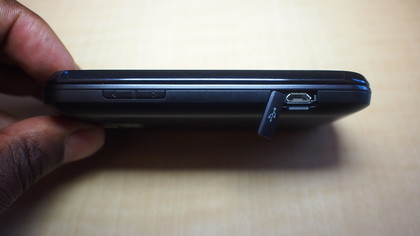
There are no buttons at the bottom, just where one can grab hold of the back cover for easy removal. In addition to the removable battery, you will also find the micro SD card slot; a 2GB card comes with the package, which you will need to replace with a higher capacity one, if you wish to use the Slider as a music capable machine. Especially since the on-board RAM is a paltry 512MB. But for the low price, that's to be expected.
On the back you will also find the 3.2 megapixel camera lens, yet another concession that is made for the sake of affordability. There is also no flash, which makes passable picture taking indoors or in low light situations a challenge. Right next to the lens is the speaker grill. The audio quality is surprisingly high, with no muffling or crackling. But the max volume is also far too low, which is rather surprising for a device that, again, is built around an audio experience.
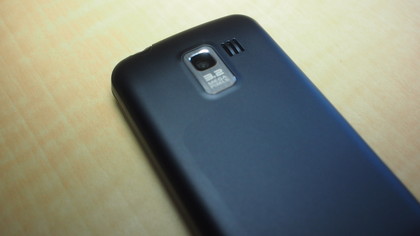
The front of the phone will not win any beauty pageants either, to put it mildly, and goes far to reinforce the stereotype that those who want a contract free phone just want something that's functional, not pretty. The overall design is based upon the V's, but whereas that phone had a certain degree of charm, despite its clearly utilitarian aesthetic, the Slider's style is even less fashionable.
The display is a 3.2-inch captive touch screen, sporting a 320x480-pixel resolution, and pixel density of 180ppi, yet another trade off that is consistent with similar budget smartphones. Image quality is fine, though definitely pixelated, meaning no HD visuals whatsoever. Another disadvantage of the almost non-existent screen real estate is how the onscreen keyboard can be difficult to manage. But that's where the physical keyboard, despite its shortcomings, comes in to save the day.
Below the screen are the familiar set of standard Android buttons, but in physical form. Its unique look is pretty much the only interesting thing about the Slider's overall vibe. And for those looking for the front facing camera, don't bother: there isn't one.
